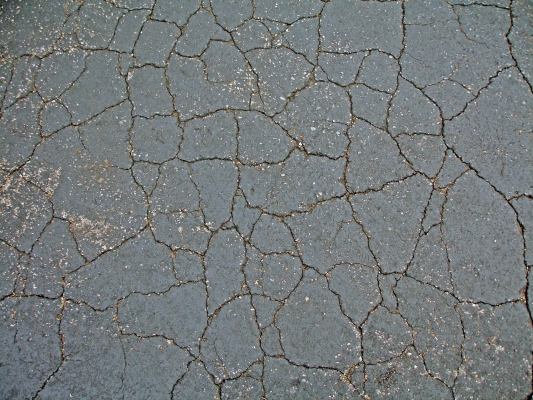Researchers explore the use of recycled concrete aggregates
Posted on October 4, 2013

Concrete that has cracked as a result of alkali-silica reaction (ASR)
OTREC researchers have done some work toward developing reliable standards for the use of recycled concrete aggregates in new concrete.
Making concrete out of recycled concrete aggregate, or RCA, can be a sustainable and cost-saving alternative to other aggregates. However, the quality of concrete made with RCA is dependent on the quality of the recycled material used. OTREC researchers Jason Ideker of Oregon State University and Jennifer Eisenhauer Tanner of the University of Wyoming, with graduate student researchers Matthew P. Adams and Angela Jones, sought to determine some of the primary concerns involved with the use of RCA and to arrive at methods of assessing its durability for use in new concrete.
Alkali-silica reaction occurs in concrete over time, causing it to expand and eventually weaken. There are standards for testing aggregate to determine its susceptibility to this reaction, but these testing standards were developed for traditional aggregates, not for RCA. Phase 1 of this research project involved accelerated laboratory tests related to assessing alkali-silica reactivity (ASR) of RCA. A team of four laboratories performed testing using the same materials to determine the variation between different laboratories.
Phase II of the research sought to provide corroboration of those results by testing an additional three aggregates in two laboratories. In addition, field specimens and mitigation studies were conducted. There are methods to control alkali-silica reactivity in concrete which contains traditional aggregates; another goal of this research was to investigate how effective those methods are in concrete incorporating RCA.
When the project’s investigators surveyed state DOTs about using RCA, the biggest reported barriers to using it were concerns about quality, a lack of standards and specifications, and unclear guidance on the testing of RCA. To advance knowledge in this area, researchers performed further multi-laboratory testing on three different RCAs from non-laboratory-created sources.
The RCA had uncertainties that will almost always exist in RCAs available to engineers. One of the RCAs came from an Oregon ready-mix concrete producer that stockpiles RCA from returned concrete; the other two came from demolished structures that had undergone ASR damage.
In addition to the accelerated laboratory tests, the researchers also wanted to establish long-term data about the performance and durability of concrete made with RCA. To this end they cast concrete blocks containing RCA and placed them in an outdoor exposure site in Laramie, Wyoming. Continued monitoring over the next 5-10 years will provide invaluable data about the reliability of accelerated laboratory tests compared to more reliable field testing.
One method of controlling ASR in traditional concrete is to use supplementary cementitious materials, which mitigate the alkali-silica reaction. Previous work has shown, however, that these materials are not as effective at mitigating ASR in concrete made with RCA compared to concrete made with natural aggregates. In other words, higher dosages of the same materials may be needed in concrete made with RCA.
Researchers used two RCAs that previous testing had already classified as reactive. Metakaolin, a material rich in aluminum trioxide (Al2O3) and silicon dioxide (SiO2), but with very low amounts of calcium oxide (CaO) was found to be most effective in mitigating alkali-silica reaction using these RCAs. Researchers also found that the effectiveness of traditional mitigation techniques may depend on the amount of adhered mortar attached to the natural aggregates in the RCA.
Based on the testing done in this research project, researchers found that the precision and bias statements in ASTM C 1260 (the standard test method for potential alkali reactivity of aggregates, developed for virgin aggregate by ASTM International, formerly known as the American Society for Testing and Materials) do not apply to RCA.
The results from this research project and from the survey have clearly established the need for development of standards and specifications for the use of RCA in new concrete. This research also highlights the need for further work toward developing a database for tracking RCA sources and enabling better usage, as well as further explorations into the efficacy of supplementary cementitious materials to control ASR when new concrete incorporates potentially reactive sources of RCA.
